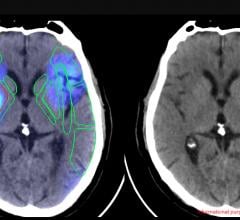June 28, 2007 - Confirma, developer of CADstream and market leader in computer-aided detection (CAD) for breast MRI, today announced research will be published in the July issue of the journal Radiology indicating that CAD for breast MRI may improve standardization and the analysis of benign and malignant lesions.
Teresa Williams, M.D., and colleagues at the Seattle Cancer Care Alliance and the University of Washington Medical Center did a retrospective examination of 154 breast lesions deemed suspicious by radiologists that were only visible on MRI and that had been biopsied under MRI guidance (‘Breast MR Imaging: Computer Aided Evaluation (CAE) Program for Discriminating Benign and Malignant Lesions’). They compared the findings and recommendations made by radiologists at the time to the findings obtained using CAD for breast MRI to evaluate studies.
The lesions in the study had been identified and biopsied during 2001-2004 from a study population of 125 women, age 27-86. The studies were processed using CADstream, version 3.0. CAD was used to analyze the breast tissue and mark areas where the MRI data curves were characteristic of abnormal lesions. Analysis of the tissue enhancement data as displayed in the CAD-processed images identified 38 of the 41 malignant lesions examined by radiologists using the software, according to researchers. Using the standardized CAD protocols and enhancement profiles, the radiologists noticed a reduction in their false positive rate. Dr. Williams was a medical resident in radiology at the Seattle Cancer Care Alliance (SCCA) when the research was done. She is now a fellow in pediatric radiology at Children’s Hospital and Regional Medical Center in Seattle.
“There are challenges associated with breast MRI and one is the time it takes to process and evaluate the many images acquired,” said Constance Lehman, M.D., corresponding author and director of radiology at the SCCA. “Computer software programs such as the one evaluated in our study can assist us in interpreting breast MRI scans more easily. Our study suggests that the information provided may improve our ability to distinguish between benign and malignant lesions.”
For more information: www.confirma.com
© Copyright Wainscot Media. All Rights Reserved.
Subscribe Now


 June 06, 2023
June 06, 2023 








